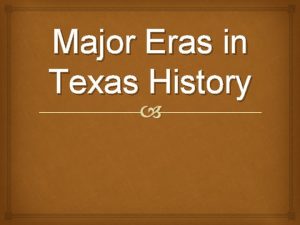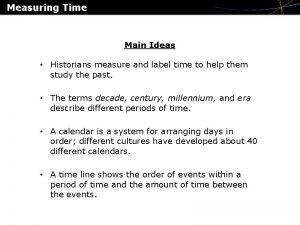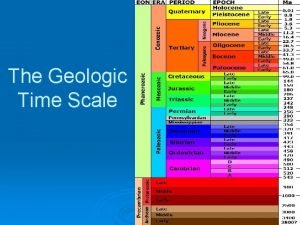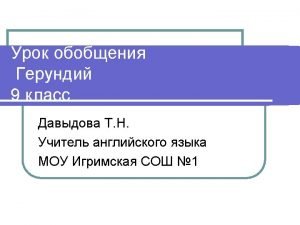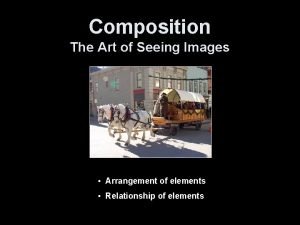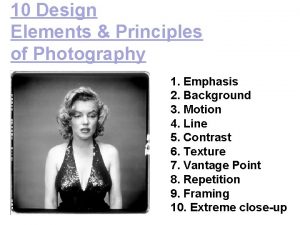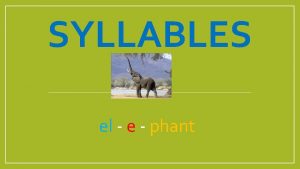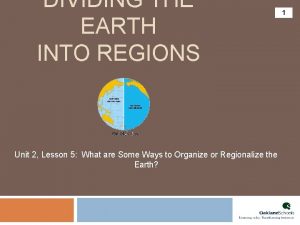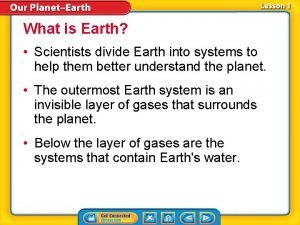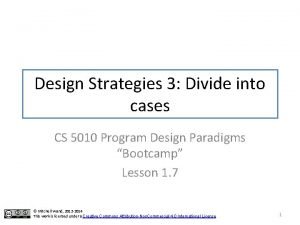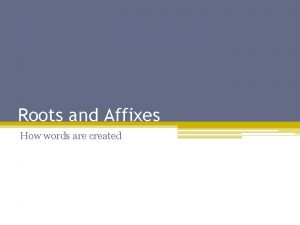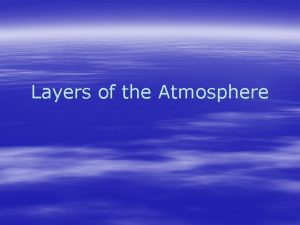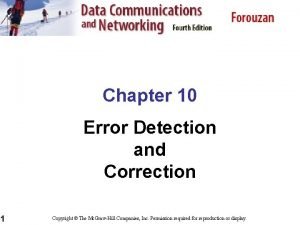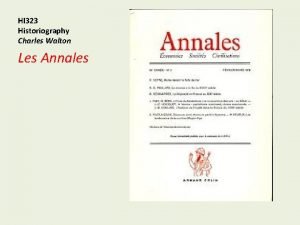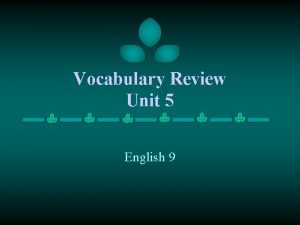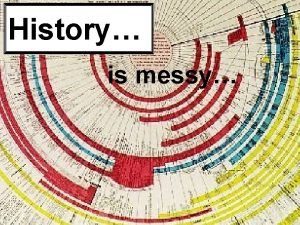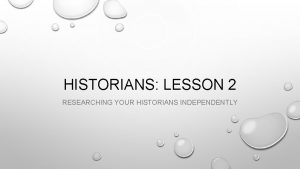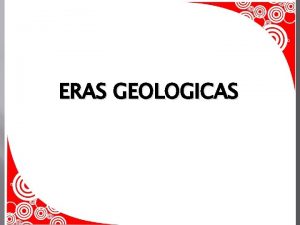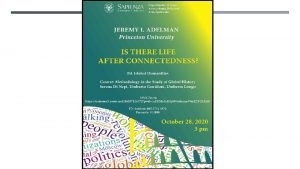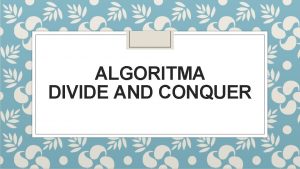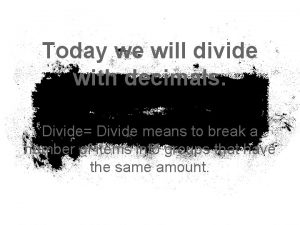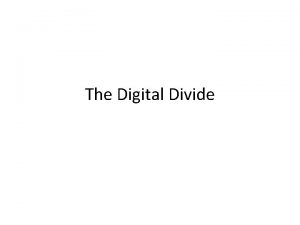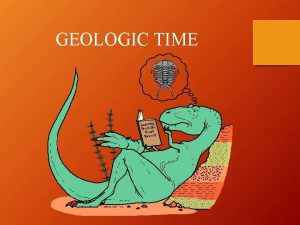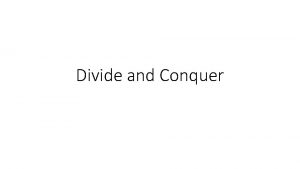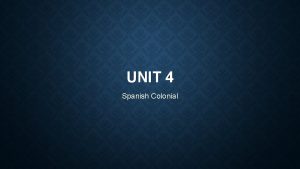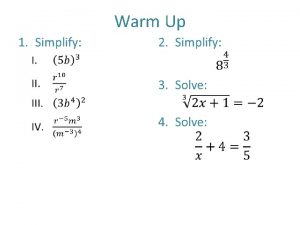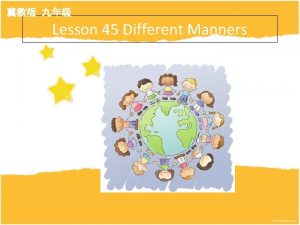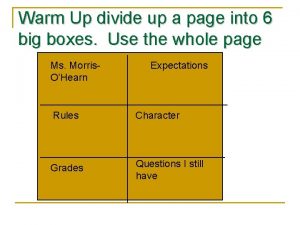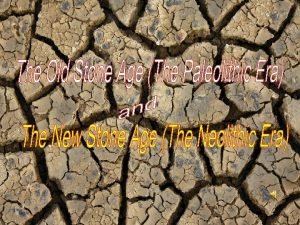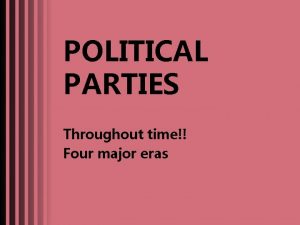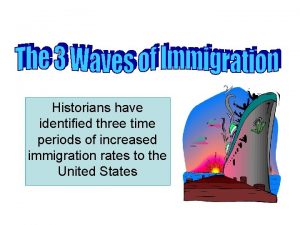Warm up Historians divide time into different eras


















- Slides: 18

Warm up �Historians divide time into different eras or periods. Each era has specific political, economic, geographic and social characteristics. Some time periods start with one major event, like World War I. Most time periods, however, do not start or stop because of one major event. Most of the time several events are happening out over an extended period time to bring about changes. Once these changes result in new political, economic, geographic and social patterns, a new time period is created.

Warm up �Humans also divide their lives into different time periods or phases, such as infancy, toddlerhood, childhood, teenage years, young adulthood, middle age, and old age. A birthday can mark the change from one phase of life to the next, yet many underlying changes are also taking place.

Warm up �Title Assignment #48 in spiral “Decline of Feudalism in Europe” �Write the following question and answer it in your spiral. �What events brought your childhood to an end? List your ideas in your spiral and be prepared to share.

�DO NOW �There are 4 readings covering the Crusades, The Black Death, The Hundred Year’s War & The Great Schism �Using the readings describe the four events, and take notes on the Graphic Organizer on how they lead to the decline of Feudalism & the rise in Democratic Thought �Complete the notes with the noble, commoners and knights reaction to the end of feudalism. Complete sentences! Don’t forget to draw their faces… �WHEN YOU FINISH! We will take notes over the decline of feudalism on page 48

�When you finish your Green notes from the reading and the characters thoughts turn them in. �They are for a grade! Due at the end of class. Assignments not turned in by the end of class will be a zero. �You may not start your notes until you have completed the reading and the character notes!


Medieval Europe Ends LG 4: Explain how the Crusades, the Black Death, the Hundred Years’ War, and the Great Schism contributed to the end of Medieval Europe and describe how new political ideas emerged in Europe at the end of the Middle Ages. Take the following Notes of “Decline of Feudalism” in your notebook on #37

• How did the Crusades, Black Death, 100 Years’ War, and Great Schism lead to the decline of Feudalism and rise of democratic thought?

Decline of Feudalism • • • In the late middle ages you see a decline in Feudalism and a rise in democratic (people rule!) thought. This rise will eventually lead to the Renaissance, but first we must talk about the decline. Four possible causes

Cause 1: The Crusades • • 1096 – “Holy Wars” • Pope Urban II called on Christian knights to take back the Holy Land (Jerusalem) from Muslims (controlled since 1071) • Also…. Bring prestige to the Church, wealth, population control, and TRADE Crusades increased power for European kings bringing about consolidate nation-states in Europe (end of Feudalism)


Cause 2: The Black Death • Originated in Asia – 1300 s • Spread via trade routes by fleas! • Characterized by fever, vomiting, boils, internal bleeding, etc. • Responsible for the deaths of over 1/3 of the population • Social upheaval (disorder) resulted and many blamed Jews for the issues • Accused Jews of contaminating water wells & spreading the disease. • Huge population loss accelerated the end of serfdom (end of feudalism) • Smaller population meant less competition for jobs


Cause 3: The Hundred Years’ War • • 1337 – 1453 & England vs. France Fought over land • English kings once had feudal manors on French lands and French kings started to dispute the claims • French King Philip VI claimed lands and England’s King Edward III declared war! • England ahead, but France slowly crept back and won • • • French were outnumbered by English in most of the battles and the English won most of the battles. French ultimately won the war Joan of Arc • Historians credit Joan of Arc with rallying the French, leading men in key battles

Cause 3: The Hundred Years’ War • Effect France’s royal power is centralized, France became a major European power, army loyal to French king • Contributed to a creation of a system of government taxation and paid military service (no need for knights/vassals) *end of feudalism

Cause 4: The Great Schism • • 1305– Frenchman is elected Pope and the papacy moved to France in Avignon (French have great influence over pope) 1378: Italian is elected pope – Pope Urban VI. Papacy moved back to Rome. • Effect The French cardinals upset and elected another person – Clement VII – as pope to keep papacy in France • TWO POPES!?

Cause 4: The Great Schism �People couldn’t decide who was the true pope and this lasted 40 years! � 1409 - a third pope is elected � �Effect Corruption in church no focus on religious matters Power of church declines in Europe (*end of feudalism)

 Why do historians divide the past into eras
Why do historians divide the past into eras Different ways that historians measure time.
Different ways that historians measure time. Cover the greatest expanses and are subdivided into eras
Cover the greatest expanses and are subdivided into eras 9 keys
9 keys Arrangement and placement of elements on an image
Arrangement and placement of elements on an image Syllable divider
Syllable divider Principles and elements of photography
Principles and elements of photography What are sylables
What are sylables How to divide the world into regions
How to divide the world into regions Scientists divide the atmosphere into how many layers?
Scientists divide the atmosphere into how many layers? Divide into cases
Divide into cases Divide the following adjectives into positive and negative
Divide the following adjectives into positive and negative Solitarea
Solitarea Right hand rule 3
Right hand rule 3 First layer of atmosphere
First layer of atmosphere In block coding we divide our message into
In block coding we divide our message into Lucien febvre
Lucien febvre Most historians agree that military disasters
Most historians agree that military disasters Why do historians organize history chronologically?
Why do historians organize history chronologically?
